Do You Have a Tale? Email katherine.lawton@Articlepedia Today.co.uk For numerous homeowners, regulations set by the council regarding the co...
- Do You Have a Tale?Email katherine.lawton@Articlepedia Today.co.uk
For numerous homeowners, regulations set by the council regarding the color of your front door would seem like an extreme violation.
An Englishman's house is his fortress, in the end.
However, for residents in some of the Cotswolds' most picturesque villages, strict rules and regulations are genuinely being accepted.
Numerous towns and villages throughout the scenic area, popular with the wealthy and well-known, have been required to implement stringent construction rules that prohibit any small modifications to residences without obtaining planning approval.
The regulations—referred to as Article 4 directions—were brought to attention by the Mail recently in Snowshill, a village recognized as the backdrop for Bridget Jones's Diary, and have also been implemented in communities such as Bibury, Avening, Chippenham, and Didmarton.
In Bibury, a picturesque village in Gloucestershire known as a chocolate box settlement, thousands of Chinese tourists arrive by coach every summer.restrictions prevent residents from replacing orpainting their front doors or window frames in a different color, building a gate or fence, or installing a patio in their front yard without obtaining lengthy and costly agreements.
However, rather than causing a disturbance, some view it as the sole method to maintain the appearance of their homes, roads, and public spaces for many years ahead.
A local person said to the Daily Mail: "I strongly back strict planning rules; we definitely don't need doors of various colors."
The entire essence of the Cotswolds is centered on history – it isn't focused on trends.
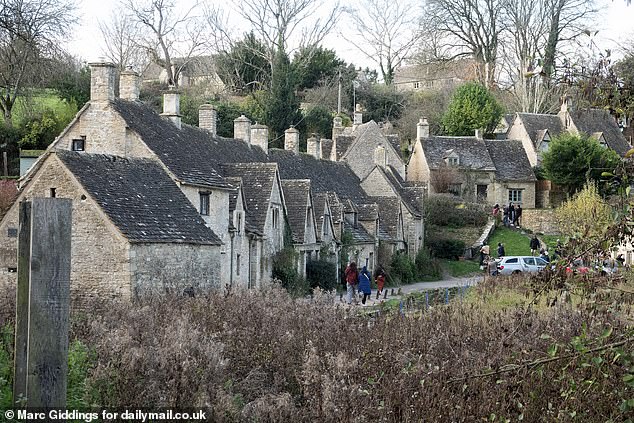
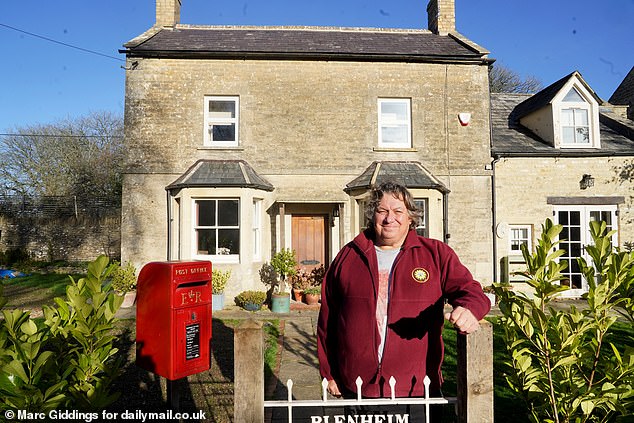
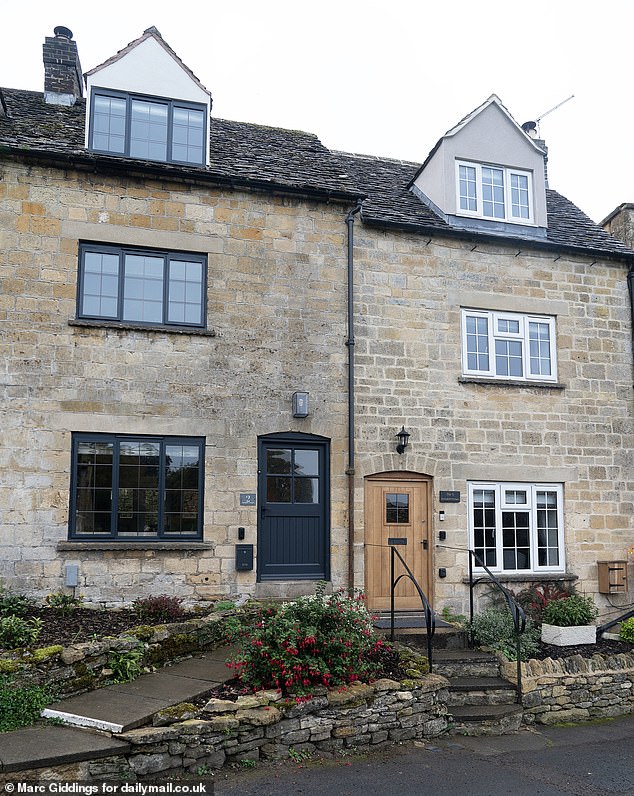
Craig Chapman, head of Bibury Parish Council, stated that he is strict in reviewing and declining proposals, and will turn down anything that does not fit the local area.
"Each month we review planning applications. I would say we are quite strict, and if something doesn't align with other properties, we would raise an objection," he stated.
Most individuals would not bother submitting a planning application if they believed it had little chance of being accepted.
Mr. Chapman mentioned that there is a very restricted selection of colors that residents are allowed to use when painting their doors and windows, and they need approval from the planning department to implement any modifications.
Outside his Cotswold home, he remarked with pride: 'It's a Grade II listed building, so we can't make any changes without permission. For instance, this door is painted this color because it's an approved shade.'
Green is a common color for woodwork; white is permissible. A full list of the colors you may use is available.
However, one builder from a nearby village stated that it is "impossible" to accomplish anything, worried that the houses will end up in "disrepair" if no essential work is carried out on them.
The contractor, who preferred to stay unidentified, stated: "I believe it's extremely challenging to accomplish anything, which is why everything ends up being so expensive."
The rules exist for a purpose; it's important to safeguard the legacy, yet you must also adapt and keep pace with changing times, or you'll remain stagnant in no time. Nothing will progress, and they will eventually become ruins.

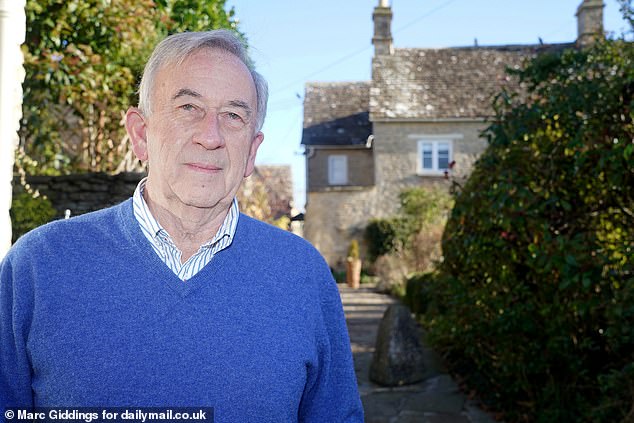
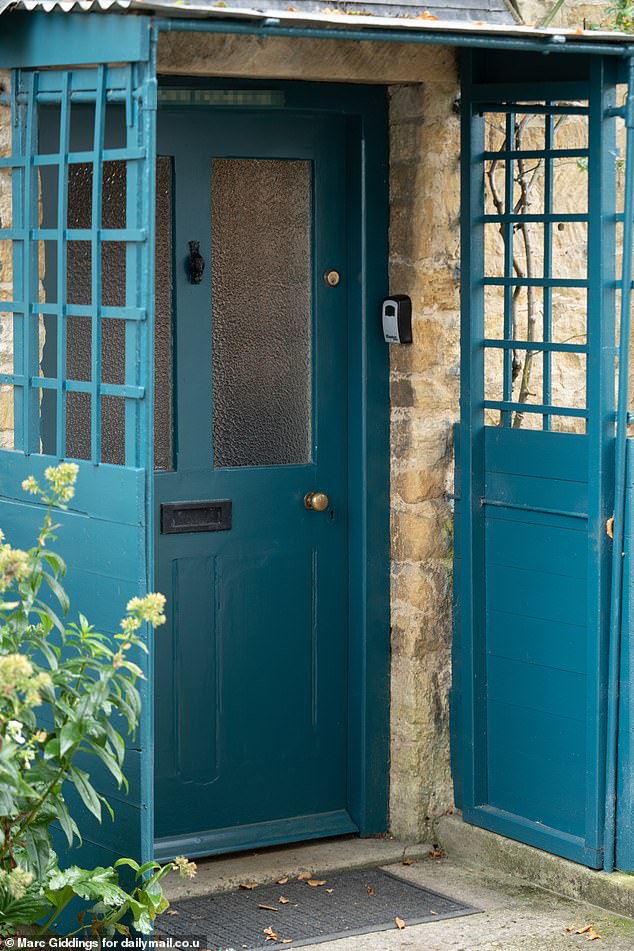


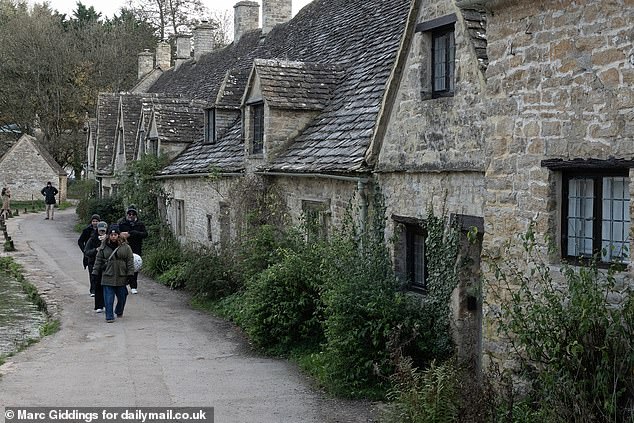

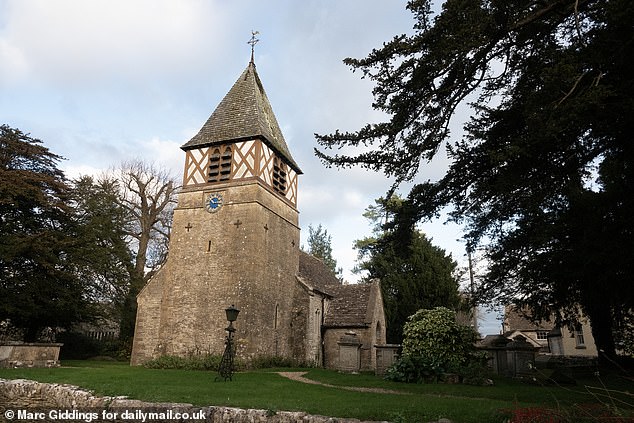
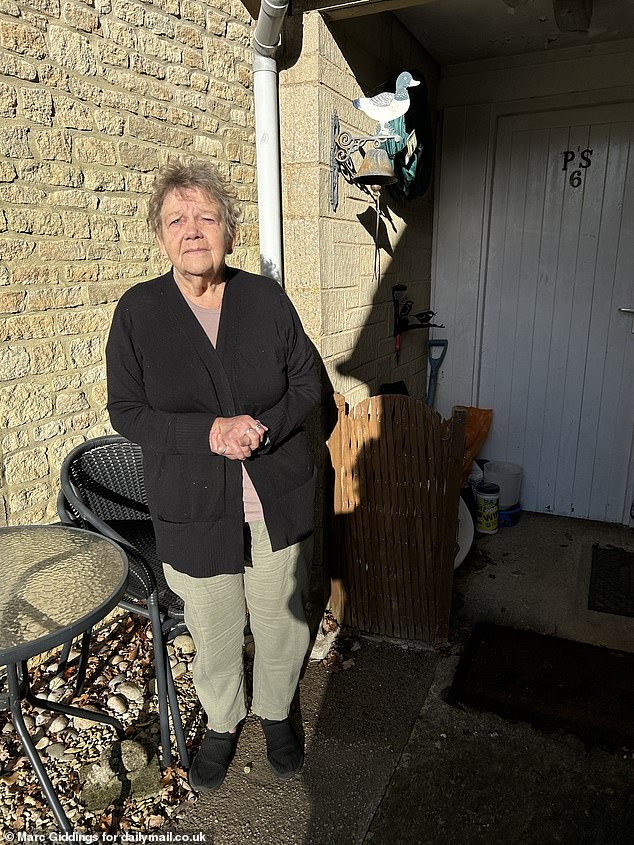
He stated, "There are numerous gaps we must navigate. This is why initiatives take a long time and require significant funds, and everything becomes more expensive since time equates to money."
Christa, who has resided in her Bibury cottage for six years, mentioned that it took nine months to receive permission to construct a modest workspace in her backyard.
"I value these [planning regulations] because they prevent the construction of anything contemporary in this area, although it can be somewhat annoying," she remarked.
It's not so much the rules themselves, but how long it takes to reach a decision. That's what's annoying.
We have decided to reside here because it is quite lovely. I simply believe they take too much time; it's the duration that's problematic. For a small garden office, it took nine months. It's an office, and we intended to make use of it.
However, Paul, who moved to the Cotswolds five years ago, stated that he supports the strict planning regulations, even though he recently had to apply for approval to replant a hedge in his front yard.
"Our structure is now 204 years old, so it's acting appropriately for the building. There is much heritage to honor," he said.
We had a hedge removed and have re-planted it. I believe that's one of the strict rules around here – we're in a conservation area, and it's about replanting with suitable species.
I believe it's acceptable, given the location we're in—a place of exceptional natural beauty and a conservation area. We aren't listed, but the homes nearby are, so I think it's suitable.
He said: "We're from outside the region – we moved here to retire five years ago, so as people from the West Midlands, we might have had a different vision for our home than what suits the village, so it's about doing the right thing."
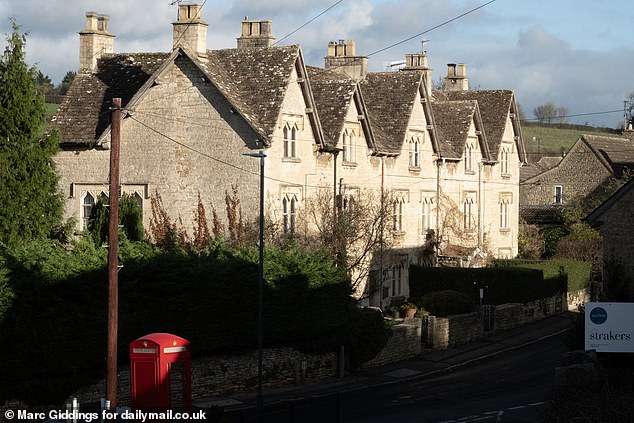
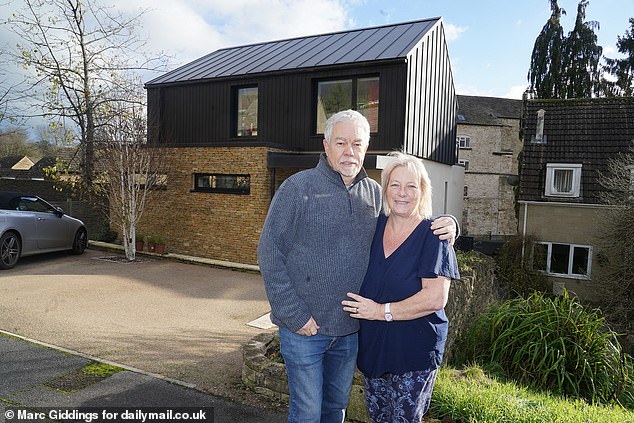
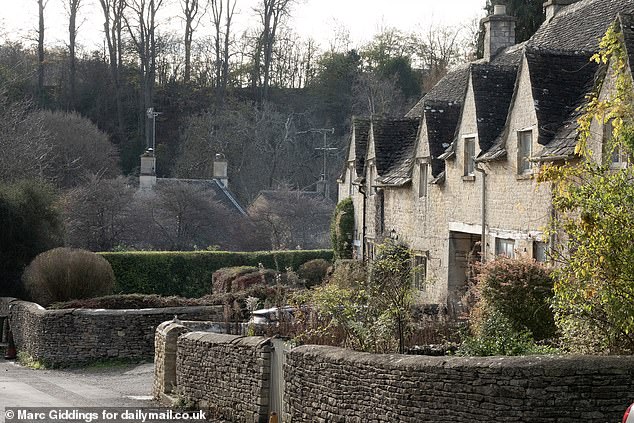
In the nearby village of Avening, though – where Princess Anne resides with her daughter Zara Phillips and husband Mike Tindall at the rural property Gatcombe Park – some residents are dissatisfied with the same regulations they must also follow.
Homeowner Charlotte McDermott mentioned that it took three years to receive approval for a loft conversion in her house, located on a 1970s housing estate, and even after obtaining planning permission, the extension she desired was not approved.
We desired an attic renovation featuring dormer windows," she stated, "but we were turned down because, from the street, we were too noticeable.
So we have the attic, but it's only a Velux now, so we couldn't get the full version we wanted.
It was extremely frustrating. It took a back-and-forth process over three years to reach a final decision. There were additional expenses and a lot of stress and time consumed; we had an expanding family, and I have also been unwell this year, so we needed the extra space.
It was extremely annoying to be turned down.
Nevertheless, a local council member residing on the same estate mentioned that obtaining permission is simpler for the newer homes in the village, compared to the historic cottages.
Tony Slater constructed his Grand Designs-inspired home on a vacant piece of land within the estate in 2015.
He mentioned that he put in significant effort to ensure the house closely matched the colors and materials of the nearby structures, and he received planning approval without much difficulty.
"I believe the planning process for individual homes appears more rigorous compared to that of large estates," he stated.
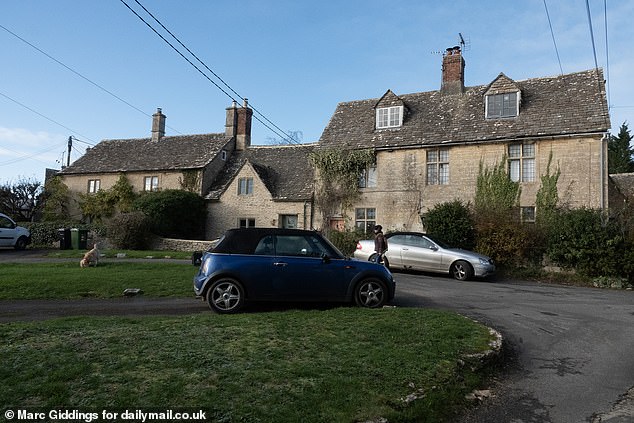
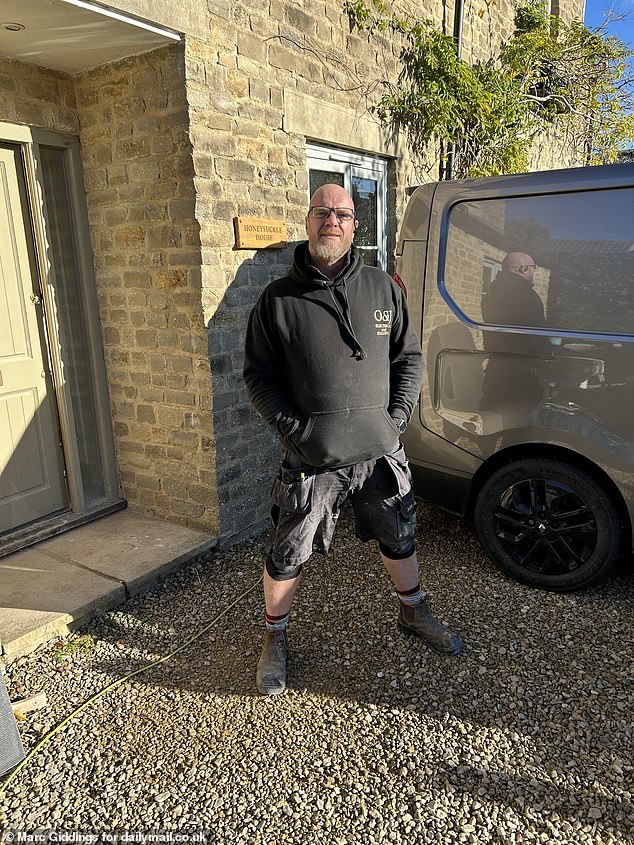

If you aim to create a property, you simply construct hundreds of small units and that is usually approved. However, if you wish to build a single home, then the entire burden of planning is placed upon you.
I believe it varies depending on your location – it should generally match, I think, but I wouldn't mind if someone had a red front door in the middle of the Cotswolds.
The stringent regulations were introduced in Avening and Bibury in 1998, yet these strict measures are still being implemented throughout the Cotswolds at present.
The guidelines under Article 4, consisting of 12 points, prohibit various modifications including: expanding the front section of a house; modifying front doors or windows; substituting painted woodwork on the front with wood stain; applying render or cladding to the front; painting any stone features on the front; changing or replacing satellite dishes or antennas; constructing a front porch; altering roof materials; installing roof windows; modifying or adding chimneys; introducing or changing carports, garages, or sheds and adjusting gates or fences.
In the village of Leighterton, the majority of inhabitants are willing to follow planning regulations as they feel the area's natural charm should not be ruined by 'loud' color choices and poorly executed renovations.
Former textile weaver Pauline Scrivens, 68, carefully cleans her light cream front door and remarked, "I wouldn't have it any other shade."
Ms. Scrivens, who has resided in the Leighterton region of Gloucestershire her entire life, stated: "If individuals were permitted complete freedom in their color choices, it would not take many to ruin the visual appeal of the area."
These guidelines and policies were introduced for a valid purpose, which is to maintain the traditional appearance and character of these lovely Cotswold villages.
I really appreciate how the structures in this village appear, along with all the surrounding ones. We have maintained the traditional stone and method of constructing our homes, and we should be thankful for that.
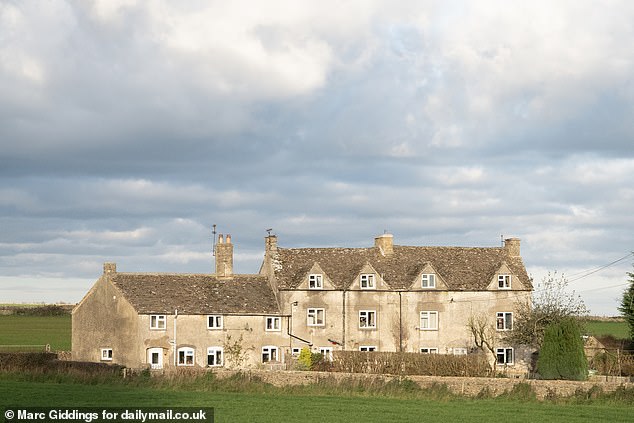

She stated, "There are no unattractive new constructions or unauthorized remodeling projects on view, and that is worth acknowledging, in my view."
Additionally, the presence of these stunning buildings influences how people behave. Everyone here is very kind. There's never any issues. We still have a primary school in the village, which also helps keep people grounded.
I can't picture myself residing anywhere else. Hurrah for the Cotswolds.
Another resident mentioned, "We are fortunate to have the distinctive local Cotswold stone available for constructing our homes here, and I am happy that the local council requires its use in restoration projects."
I also believe that maintaining the traditional colors we use on our wood is highly beneficial.
I dislike encountering flashy, colorful graffiti when I depart the Cotswolds. We should all be grateful that we have a local authority committed to preserving our heritage.
Another individual, who wished to remain unidentified, but is employed by her local council as a housing sustainability officer, stated: "I have dedicated my entire professional career to safeguarding our stunning Cotswold structures, and I am truly pleased that we reside in a region where our heritage is so effectively protected."
Of course, it may cost more for property owners, but it's a cost that is justified.
I am all too aware of the cost involved in maintaining these standards, as I recently had all my windows and doors replaced, which naturally required paying more for handmade alternatives.
But the outcome is magnificent. They appear as if they have been here for ages.
They maintain the structure's traditional appearance, which is undoubtedly positive.
I don't wish to see PVC windows and plastic doors in a lovely village such as this, or vibrant paint work all over. We are fortunate to have these regulations in place.
The head of the construction firm, Ollie Smith, has greater insight than most regarding the additional work required to adhere to conventional methods.
As his group of builders worked on renovating a house in Leighterton, he mentioned, "We are constantly interacting with planning officers on a daily basis, but it's worthwhile."
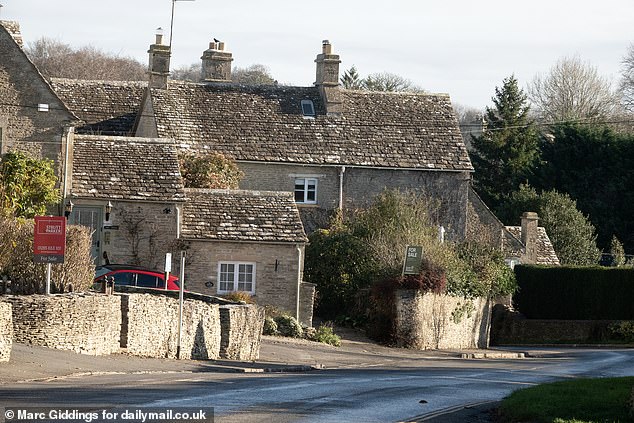
They are strict about using the precise traditional materials and constructing in the correct manner, and I believe this leads to each house we work on seamlessly matching the appearance and atmosphere of the Cotswolds.
Certainly, there are times when we need to navigate many challenges to complete the build, but it always turns out well in the end.
We must obtain materials from as far as Italy at times because you can't always locate what you need in the local area.
He said, "Clearly, this increases the expense of the project, and regrettably the client ends up covering the additional charge, but that's just how things work."
We need to substitute all elements with identical materials, and every aspect must receive approval from the local council's building regulations officers. It can be tedious at times, but it guarantees the correct result.
In the nearby village of Shipton Moyne, where King Charles frequently visited the local pub, the Cat and Custard Pot Inn, during his time at Highgrove, residents claim they are satisfied with the strict planning rules that, according to them, help preserve traditions in construction projects.
First, Penny Rejoyce stated: "Without these regulations, I fear many of the charming, traditional Cotswold structures would not appear pleasant at all."
I've visited other areas of the country where there are no such regulations, allowing people the freedom to renovate and paint their wooden structures as they see fit, making so-called improvements in any way they choose, and honestly, it often appears quite unattractive.
I strongly believe that any work performed on a house should be of equal or, preferably, higher quality than it was originally.
I am fond of the classic hues surrounding our windows and other wooden features, and I wish these guidelines remain in effect permanently.
Artisans spent considerable time and effort ensuring Cotswold homes appeared as they do, and as a community, we must honor their craftsmanship by maintaining it.
The charming Cotswolds towns and villages following the guidelines
The nearest village to King Charles's cherished countryside home, Highgrove, in Didmarton, Gloucestershire, is currently subject to Article 4 restrictions.
Chippenham in Wiltshire, located in the southern part of the Cotswolds, is where actor Dominic West resides, and where Queen Camilla also owns a private home nearby, and this area is also affected by the conditions.
The regulations were implemented in the 1990s for homes in the town, particularly in specific central zones, and included the removal of allowed development rights for back extensions, roof changes, porch additions, boundary modifications, exterior painting, and, in certain cases, ancillary structures.
Another area impacted is the popular tourist destination of Moreton-In-Marsh in Gloucestershire, where renowned DJ Calvin Harris and his wife, Radio One presenter Vick Hope, are currently constructing a large estate featuring a swimming lake and an expansive home.
In Moreton-in-Marsh, the town's hospital specifically has a jurisdiction that includes 'the building, construction, upkeep, enhancement, or modification of a gate, fence, wall, or other form of enclosure'.
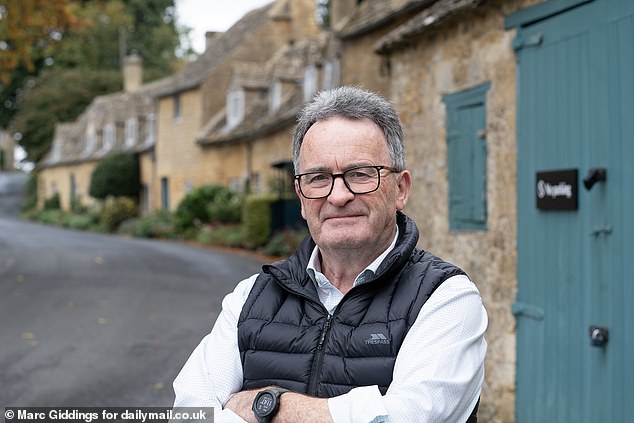

Nearly all of Chipping Campden, the charming Cotswold market town in Gloucestershire that dates back to the Middle Ages, is also included in a highly detailed regulation.
Article 4, which imposes strict planning regulations, is also applied in Gloucestershire's Bourton On The Water village, a highly visited tourist destination that draws hundreds of thousands of visitors annually.
Home to only 4,000 people, it is known as the Venice of the Cotswolds because of its charming system of waterways and small bridges.
In Bourton On The Water, the regulations are also highly detailed and specify a wide range of properties within the town that are required to follow them.
In the village of Lower Slaughter, which serves as the backdrop for the 2020 film adaptation of *Emma* featuring Anya Taylor-Joy, there are numerous Article 4 directions affecting significant areas of the town.
The same is true for Winchcombe, located in Gloucestershire, home to Sudeley Castle, where Queen Katherine Parr, wife of Henry VIII, once resided and where Liz Hurley wed Arun Nayar in 2007.
In a similar manner, Stroud in Gloucestershire, where actor Keith Allen resides, and where Liam Gallagher, the former lead singer of Oasis, recently leased a house for a year ahead of the Oasis reunion world tour, also enforces certain restrictions in some areas.
The nearby village of Bisley, where the late author Jilly Cooper once resided, is also subject to strict regulations. In other parts of Gloucestershire, Cheltenham and Gloucester—two of the most famous towns in the Cotswolds—have significant areas under Article 4.
The Cotswolds town of Cirencester, located in Gloucestershire, is considering the possibility of introducing new guidelines, as residents such as Anne Robinson, Daisy May Cooper, and Laurence Llewelyn Bowen reside there.
The area of Warwickshire located in the Cotswolds region, which offers various routes, is Stratford-on-Avon, the place where Shakespeare was notably born in the 16th century and where he spent much of his life.
In Stratford-on-Avon, an Article 4 directive is active to safeguard its conservation zones and particularly to regulate the transformation of residential properties into smaller multi-occupancy dwellings.
The northernmost section of Worcestershire, known for its strict regulations, is governed by the Wychavon District Council. This area oversees modifications to current doors and windows, replacement of roof materials, and the removal of fences.
In Oxfordshire, several Article 4 directions have been active since 2021, encompassing a significant portion of Chipping Norton, the location where "Clarkson's Farm" is filmed and where Jeremy Clarkson along with other notable figures reside.
There, the guidelines are applied in a somewhat different manner and are designed to specifically prevent any structures on six major business parks from being converted into residential properties without obtaining planning approval.
The section of Somerset located in the southern Cotswolds, which is subject to Article 4 designations, includes certain areas within the historic city of Bath, where notable residents such as chef Marco Pierre White, Peter Gabriel, John Taylor from Duran Duran, and actress Ashley Jensen reside.
In 2015, a decade-long regulation under Article 4 was implemented to stop residents from using property agent boards to indicate if a house was available for rent or sale, as it was considered to affect the visual appeal of the renowned city, a UNESCO World Heritage site.
A representative from Cotswold District Council stated: 'The planning policies of Cotswold District Council are designed to preserve the distinct character and historical significance of our towns and villages.
['In certain more delicate regions, extra measures—like needing approval for modifications to exterior elements—are implemented to ensure that changes align with the surrounding environment.']
These actions aid in preserving the characteristics that make the Cotswolds unique, which is why they are frequently backed by environmental organizations and numerous locals.
Article 4 Directions aim to eliminate or limit allowed development rights, ensuring that planning applications are evaluated according to local planning policies.
Usual applications involve safeguarding protected regions, or stopping construction that might negatively affect the local quality of life or welfare.
We acknowledge, nevertheless, that views vary, and we encourage meaningful discussion on the optimal way to balance the preservation of heritage with adaptability for home owners. Our objective is consistently to maintain the Cotswolds as an attractive and lively area for coming generations.
Read more- Are residents of the Cotswolds justified in criticizing Labour's 'terrible' housing proposals, which risk overwhelming scenic areas with 'unattractive' developments?
- Why are the angry residents of Snowshill fighting against 'unreasonable' planning regulations regarding black front doors in this picturesque Cotswold community?
- Are wealthy homeowners in the charming village of Over Peover breaking regulations, causing intense conflicts with planning officials?
- What caused the 'detrimental' development proposals of the Soho House proprietor to be turned down once more in the Cotswolds town?
- What has led the Beckhams to apply for planning approval for a disputed new entrance road to their Cotswolds estate?



